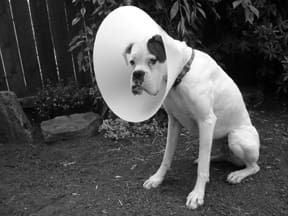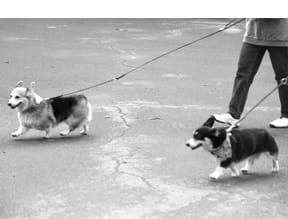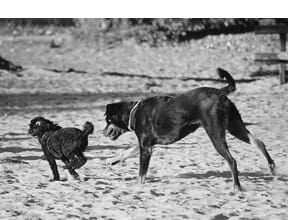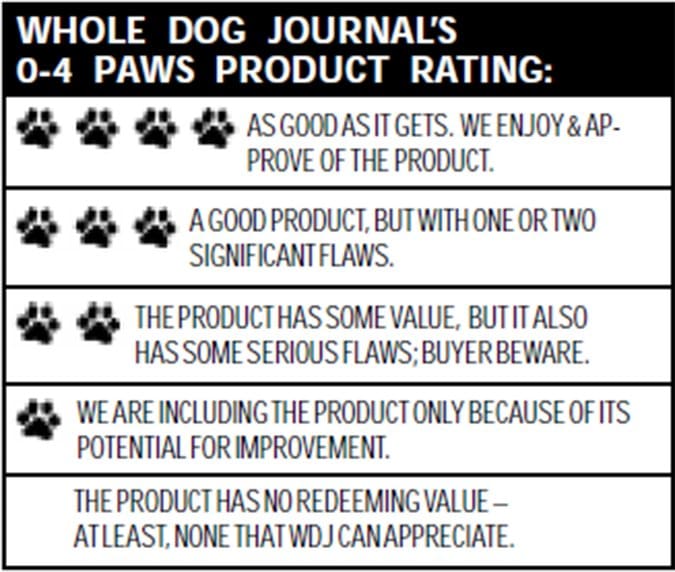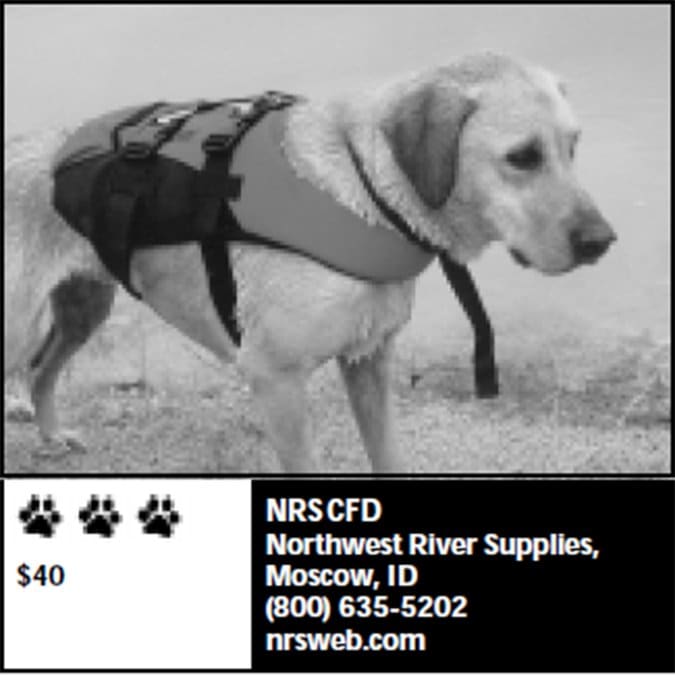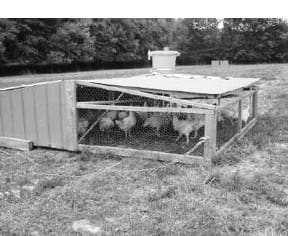By Shannon Wilkinson
The lampshade, satellite dish, or cone – no matter what you call it, it is hard not to alternately laugh and feel sorry for any dog wearing one. Often used after surgical procedures, these cone-shaped collars are designed to keep dogs from licking sutures or wounds, potentially opening the wounds or tearing the stitches. They are also used to keep a dog with an injury or surgical site on his head from scratching it with his paws.
In most cases, dogs wear the protective collars for a few days post-surgery until the incision has healed. Other times, dogs wear them for longer periods to help with problems such as lick granulomas, excessive itchiness, hot spots, or other wounds that take longer to heal.
Some dogs are just fine with wearing these protective collars, and others go bonkers. My Boxer, Tyler, is one of those dogs that goes bonkers with a traditional Elizabethan collar. First he freezes. Then he starts pawing at it and fighting it until he threatens to hurt himself or someone else. It’s difficult to keep him quiet enough so that he can heal properly.
This past spring, after surgery to remove a growth on his elbow, we had the opportunity to try out a number of different types of collars and other products to keep him away from the incision. He came home from the surgery with the vet-supplied Elizabethan collar. But as soon as we unleashed him in the house, he started trying to remove the collar forcibly. Then we started exploring our options.
Following is a summary of the products we used to restrict access to his incision. We readily ascertained that all of the products were effective for certain purposes (thus our top rating for each), although Tyler was more comfortable with some than others.
When considering what to use for your dog, keep the location of his wound in mind (some products are better than others at preventing his access to different parts of his body). But also take into consideration his personality, energy level, and general ability to adapt to different circumstances. Consider, too, the other animals in the house, because some of these products can be helpful to the dog wearing them, but disruptive or “scary” to those around him.
Finally, if your dog has to wear some sort of collar for longer than a few days, you might want to try different products for different circumstances. For instance, one might work great when you are supervising him, another is better when he’s unattended, and another one might work best for sleeping. With a little experimentation, you’re sure to find a product that helps your dog heal in comfort.
Conventional cones
Veterinary clinics usually provide their clients with classic Elizabethan collars made of thick plastic. The cone-shaped collars fasten around the dog’s neck and are tied with a string or length of gauze. They can be made somewhat more comfortable by taping the sometimes sharp edges. Typically opaque, they limit the dog’s peripheral vision. Some dogs may bump into door frames or walls with the stiff collar, which can be jarring and noisy.
There are plenty of dogs that do just fine with a traditional Elizabethan collar. Unfortunately, my dog Tyler isn’t one of them. He fought this collar at every opportunity. It also upset our other dog, who acted wary of Tyler in the collar and startled at the noise it created when Tyler bumped against things.
The traditional Elizabethan Collar was provided by our veterinarian. On the advice of a friend, I looked for and found a very similar collar for less money at our local Petco.
The Pet Botanics E-Collar is a twist on the traditional Elizabethan collar. This version is translucent, so it does not limit the dog’s peripheral vision like the traditional opaque collars do. The E-Collar also comes in translucent colors such as blue and pink. It is padded with a layer of vinyl around the neck for increased comfort, and uses plastic snaps to close the collar at the proper size. The Pet Botanics’ collars are made of a lighter-weight (but still sturdy) plastic than the vet-supplied Elizabethan collars.
For some dogs, the E-Collar could be a good option because of the increased visibility and lighter weight. Tyler however, reacted to this collar much like he did the traditional model.
We purchased the E-Collar from a local Petco. They are also available from Petco’s Web site, where they range in price from $10.50 to $21, depending on the size.
Ring around the collar
A different take on the Elizabethan collar, the Soft-E-Collar™ looks more like a life preserver than a cone. It is a vinyl-covered foam pillow that prevents the dog from reaching his incisions or wounds. Because of its flat shape, it doesn’t obscure the dog’s vision the way a cone does, but does block access to his body and most of his extremities. This does depend somewhat on the flexibility of your dog and the length of his muzzle and tongue.
It is much easier for a dog to go about his normal business with the Soft-E-Collar. It doesn’t get in the way of eating or drinking. Your dog can still play catch, tug, and other games while wearing the collar. It also is less noisy and jarring if the dog bumps against anything while wearing it.
On the down side, the Soft-E-Collar, like traditional Elizabethan collars, ties around the dog’s neck with a string. When we tried this collar on Tyler, we made the mistake of looping the string around his regular flat collar. This nearly caused a serious problem when Tyler used both front paws to swiftly push the Soft-E over his head, which caused his regular collar to start to choke him. If your dog is really committed to trying to get the collar off, this is not the most secure choice.
Bracing difference
The Bite Not Collar closely resembles a cervical collar used for whiplash in people; in fact, its manufacturer says the collar can be used for a dog’s cervical stabilization. This well-padded plastic collar fits snugly around the dog’s neck, fastening with Velcro. It has a nylon chest strap that fastens behind the front legs to keep the collar properly in place.
The Bite Not collar works by limiting the extent to which the dog can bend his neck to reach various parts of his body. This means the collar works well to prevent dogs from licking their rear ends – back, rump, base of tail, flanks, chest, abdomen, genitals – but, depending on the flexibility of the dog and the length of his legs, he may be able to lick his feet. Also, this collar won’t keep a dog with a problem on his head (such as an ear hematoma or infected eye) from scratching or rubbing his head with his paws.
Tyler didn’t react negatively to this collar at all. He played tug with our other dog and even fetched his ball a few times while wearing it. The manufacturers say that the dog should be able to eat and drink while wearing the collar; Tyler couldn’t. He also was not able to lower his head much and therefore was not able to pick up anything from the ground. It’s possible that he would have more freedom of movement with a different size collar, although I’m not sure if a smaller size would sufficiently restrict access to his wound.
Bite Not Products sells its collars through veterinarians and through some catalog outlets. You can ask your veterinarian to order one for you; we ordered direct from the Omaha Vaccine Company at (800) 367-4444 or www.omahavaccine.com.
Something different
K9 Top Coat’s Lycra Bodysuit represents a totally different tack to take when trying to prevent a dog’s self-mutilation. As you might imagine, the Lycra Bodysuit is a full body suit made of stretchy Lycra, which completely covers the dog except for his head, paws, and between the legs (so it doesn’t inhibit elimination). It’s easy to put on and take off, machine washable, and very durable.
Given its design, the coat is not indicated for protecting head wounds or preventing paw-licking; the manufacturer recommends using it over dressed wounds and for allergy and hot spot control. An optional, detachable panel can be purchased to cover a spay or neuter surgical incision.
While we imagine that some dogs might chew themselves right through the fabric, this wasn’t the case with Tyler; even though he was obsessed with licking his wound when he was not wearing the coat, he seemed to forget all about it once the coat was on. What’s more, it didn’t irritate his wound, and Tyler was more comfortable, had complete freedom of movement, and looked cute!
The Lycra Bodysuit was the most expensive option we found, so it may be a better solution for long-term problems such as allergies than post-surgical healing.
In a few cases where the Lycra Bodysuit is indicated, a simple T-shirt might work, too. It depends on the location and type of your dog’s wound or problem. Many people use T-shirts on their dogs after spaying or neutering, and find it’s the only thing their dog needs to leave the incision alone.
We weren’t so lucky with Tyler. A T-shirt didn’t keep him from licking his post-surgery bandage. However, it worked for our Great Dane, Booker, after gastropexy (stomach tacking) surgery for bloat, even though the T-shirt covered only about half of his long incision.
Depending on the size of your dog, you might be able to use one of your own T-shirts, or use a child’s or infant’s T-shirt. People T-shirts fit best on dogs when they are put on so the tag is on the dog’s chest under his chin. Gather up the loose material around the dog’s waist and either knot it, or use a hair scrunchy to hold it gathered up on the dog’s back.
-Shannon Wilkinson is a TTouch practitioner who lives with two dogs, two cats, and a husband in Portland, Oregon.


